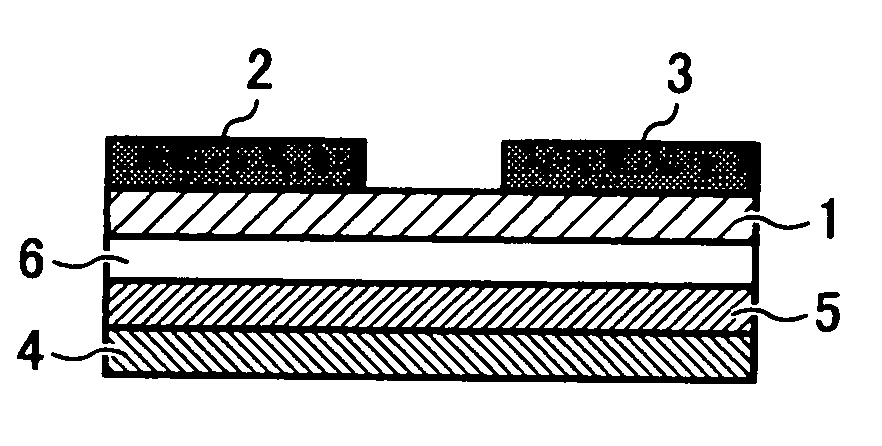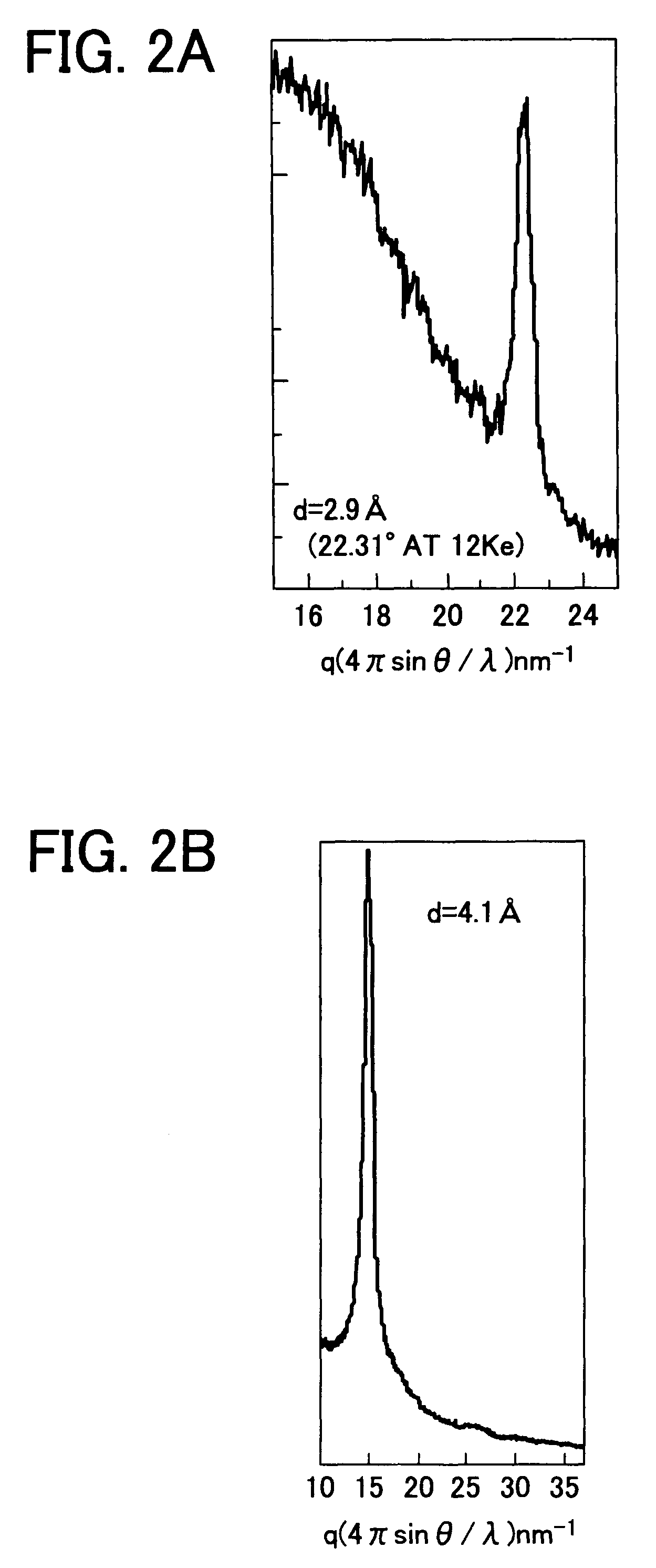Organic thin-film transistor
a thin-film transistor and organic technology, applied in the direction of discharge tube luminescnet screens, thermoelectric devices, natural mineral layered products, etc., can solve the problems of low heat resistance and inability to form organic thin-film transistors on plastic boards with low heat resistance, and achieve the effect of high transportability
- Summary
- Abstract
- Description
- Claims
- Application Information
AI Technical Summary
Benefits of technology
Problems solved by technology
Method used
Image
Examples
example 1
[0052]The substrate for organic thin-film transistor prepared as above was dipped in a toluene solution including phenyltrichlorosilane in an amount of 5 mM for 30 min while exposed with ultrasonic, and dried. The structural analysis of the thus treated substrate is shown in FIG. 2A. A structure having a surface separation of 2.9 Å and a half width not greater than ±0.1 Å can be identified.
[0053]In FIGS. 2A and 2B, when the X-ray diffraction is measured, 2θ is typically used for a horizontal axis. When 2θ is a surface separation (d) and a measurement wavelength (λ), a diffraction peak appears at a point where 2d sin θ=λ. When the measurement wavelength (λ) and the diffraction angle θ are fixed, the surface separation d is identified. Cukα ray having λ of known 1.1418 Å is typically used for the measurement, and 2θ can be used.
[0054]However, in terms of balance between a sample damage (low energy damages an organic material) and a measurement range (high energy causes a low angle, re...
example 2
[0065]The procedure for preparation of the organic thin-film transistors in Example 1 was repeated to prepare two organic thin-film transistors except for mixing an organic semiconductive compound having the following formula
[0066]
with the organic semiconductive compound in Example 1 such that the organic semiconductive compounds had a mixing ratio (Example 1 / Example 2) of 6 / 4.
[0067]The field-effect transportabilities of the organic thin-film transistors were 4.1×10−3 cm2 / Vs, respectively as shown in FIG. 4.
[0068]The organic thin-film transistors had no variations between the elements and good reproducibilities.
example 3
[0069]The procedure for preparation of the organic thin-film transistors in Example 1 was repeated to prepare two organic thin-film transistors except that the substrate was dipped in a toluene solution including phenethyltrichlorosilane in an amount of 5 mM for 30 min while exposed with ultrasonic, and dried. The field-effect transportabilities of the organic thin-film transistors were 2.8×10−3 cm2 / Vs, respectively as shown in FIG. 5.
PUM
| Property | Measurement | Unit |
|---|---|---|
| thickness | aaaaa | aaaaa |
| thickness | aaaaa | aaaaa |
| incident energy | aaaaa | aaaaa |
Abstract
Description
Claims
Application Information
 Login to View More
Login to View More - R&D
- Intellectual Property
- Life Sciences
- Materials
- Tech Scout
- Unparalleled Data Quality
- Higher Quality Content
- 60% Fewer Hallucinations
Browse by: Latest US Patents, China's latest patents, Technical Efficacy Thesaurus, Application Domain, Technology Topic, Popular Technical Reports.
© 2025 PatSnap. All rights reserved.Legal|Privacy policy|Modern Slavery Act Transparency Statement|Sitemap|About US| Contact US: help@patsnap.com



